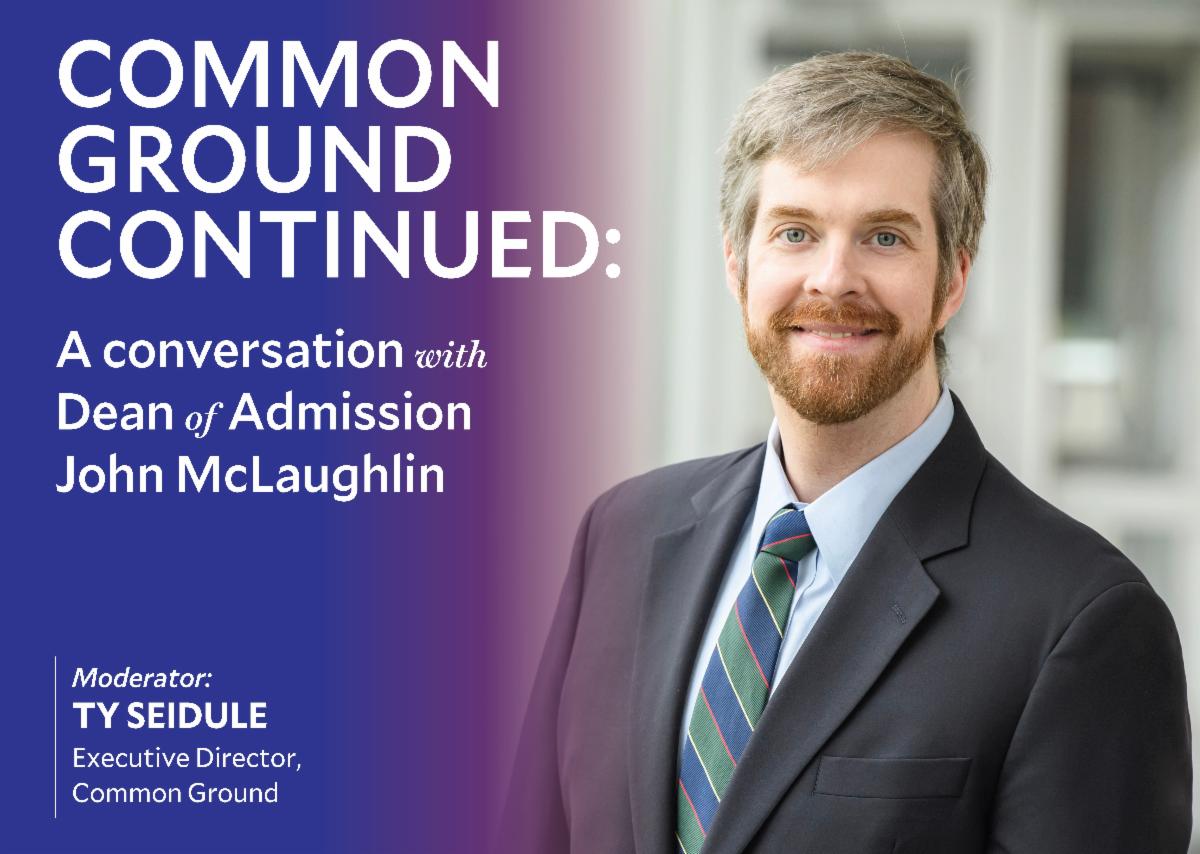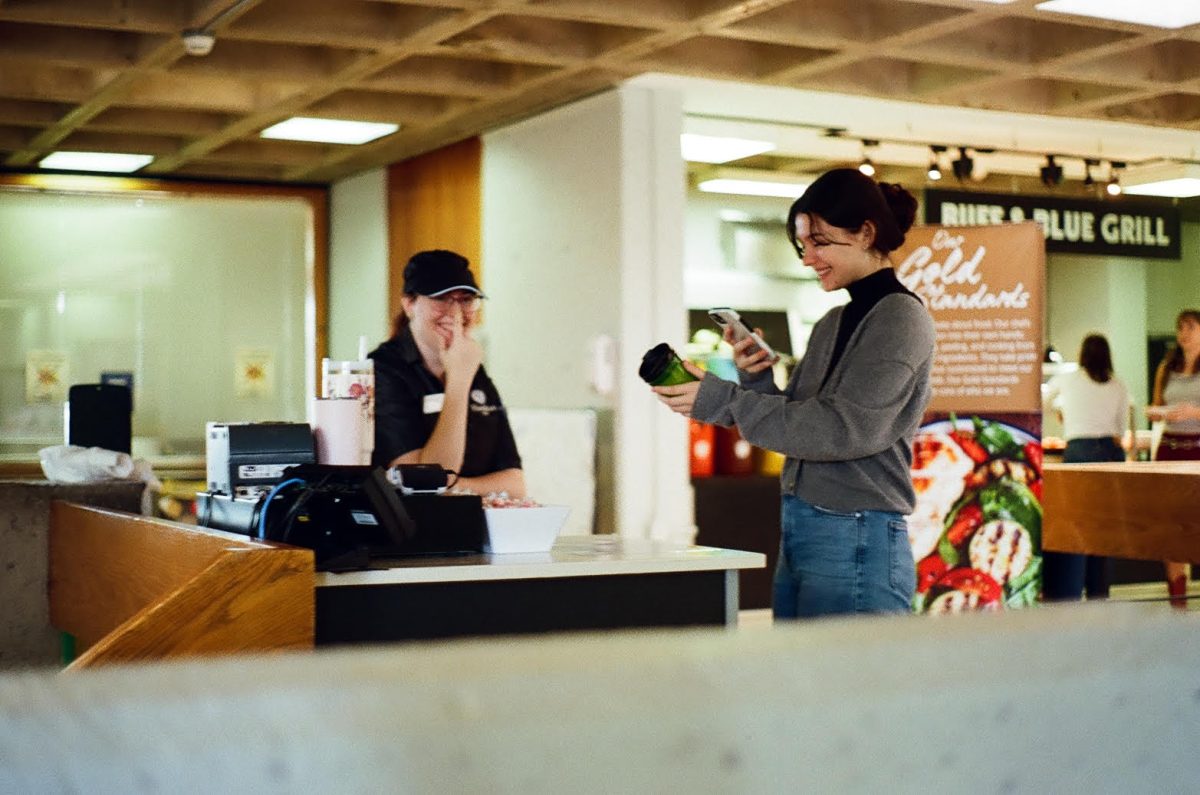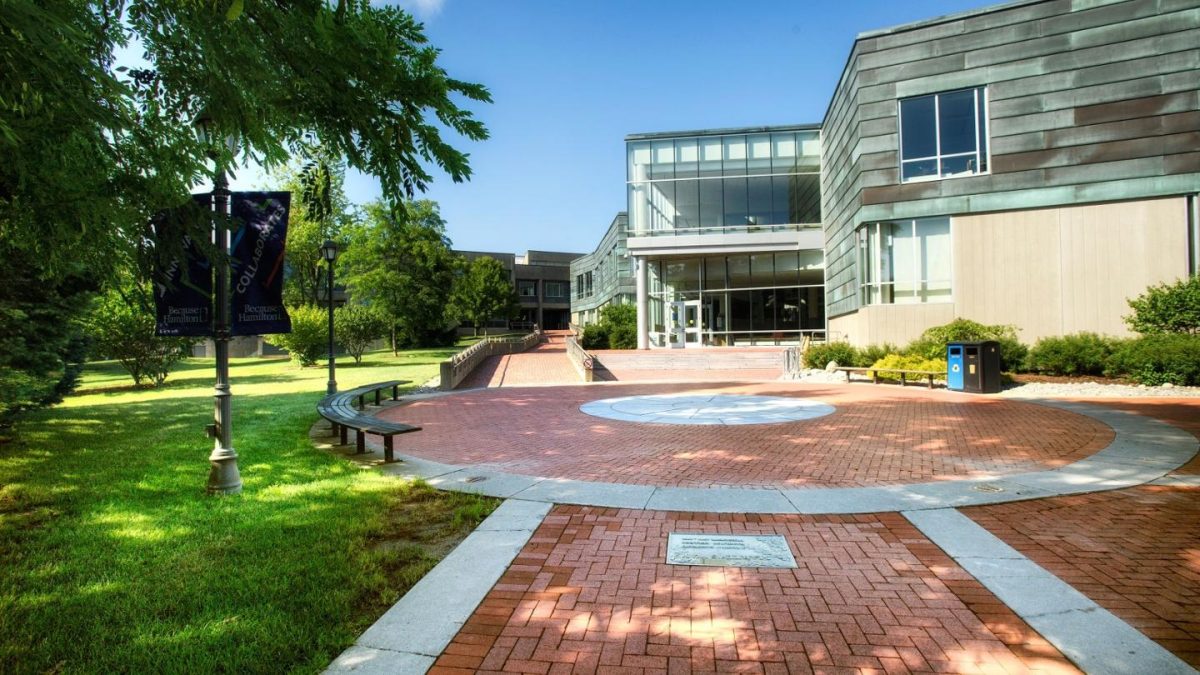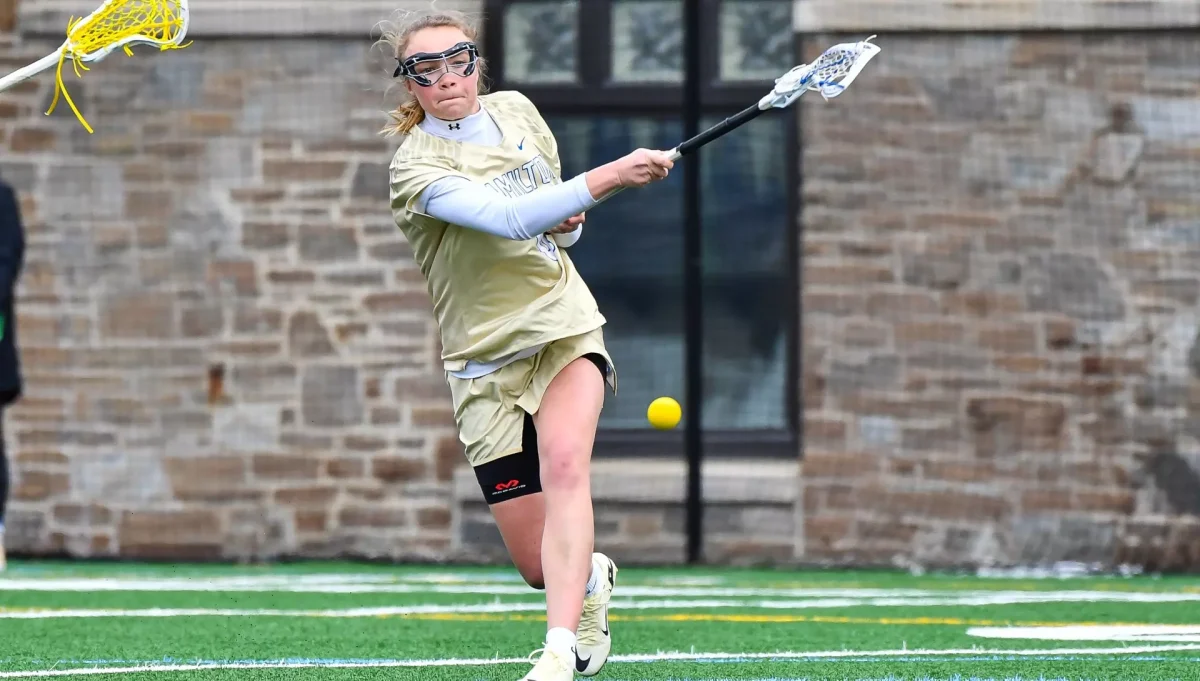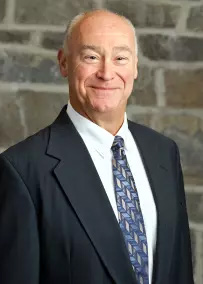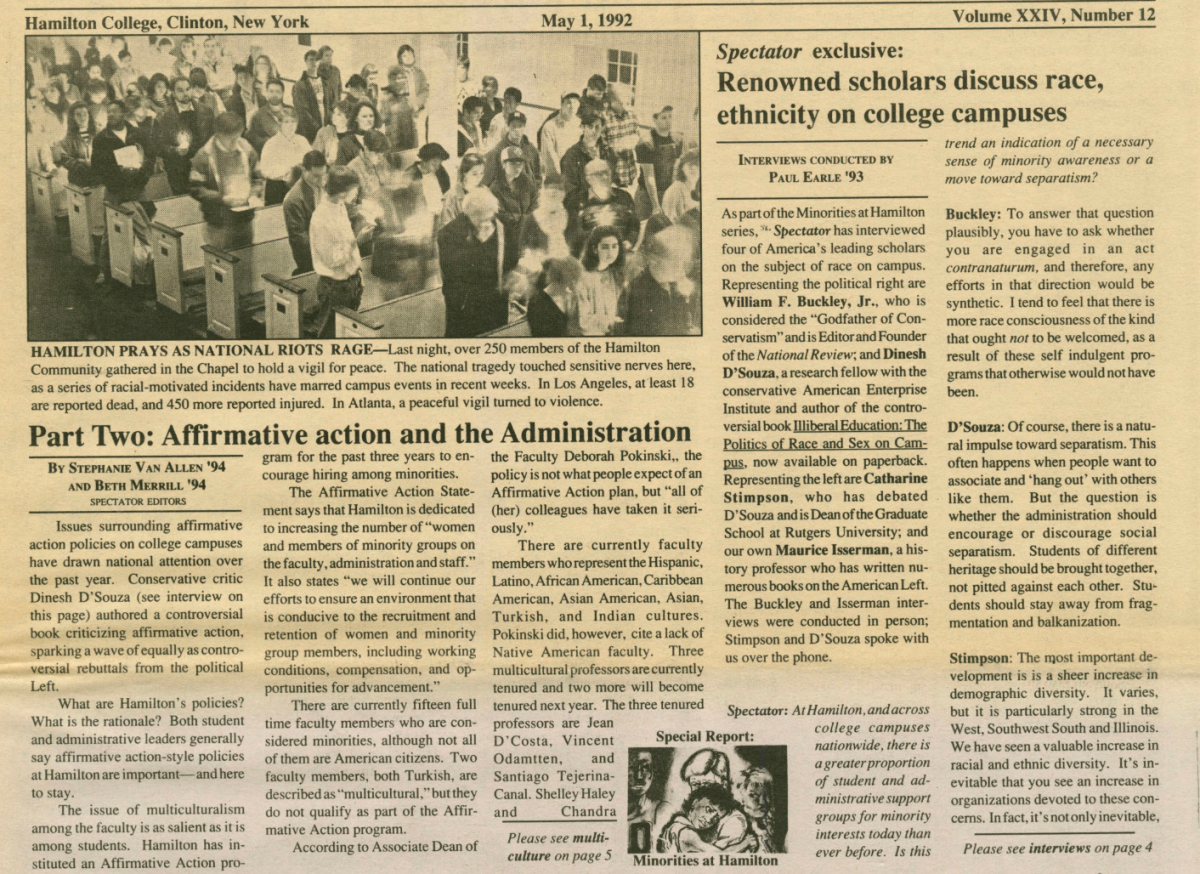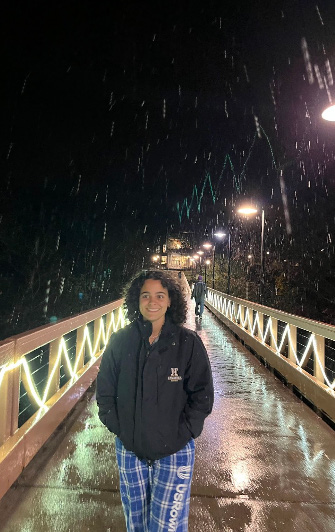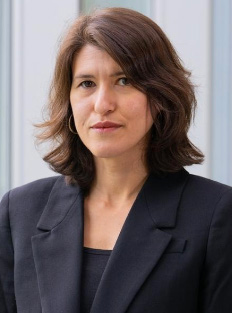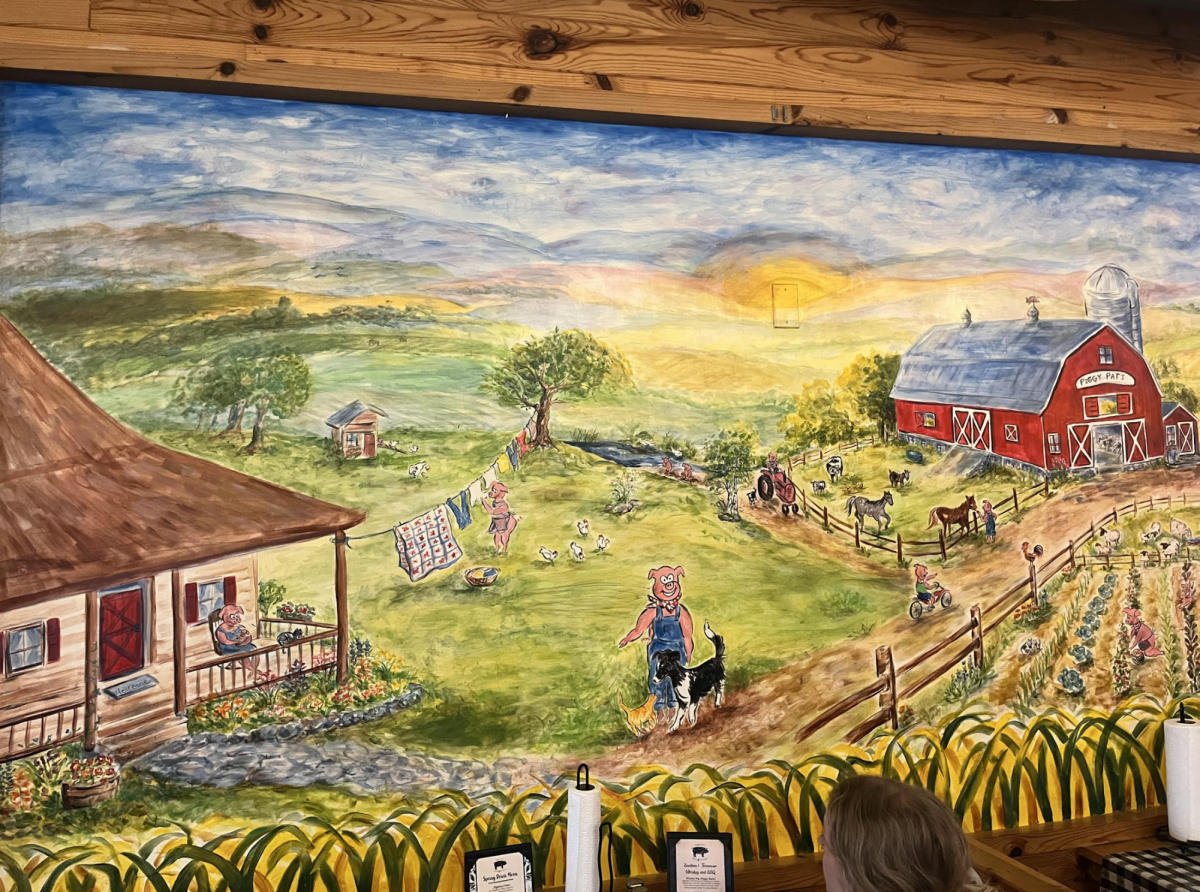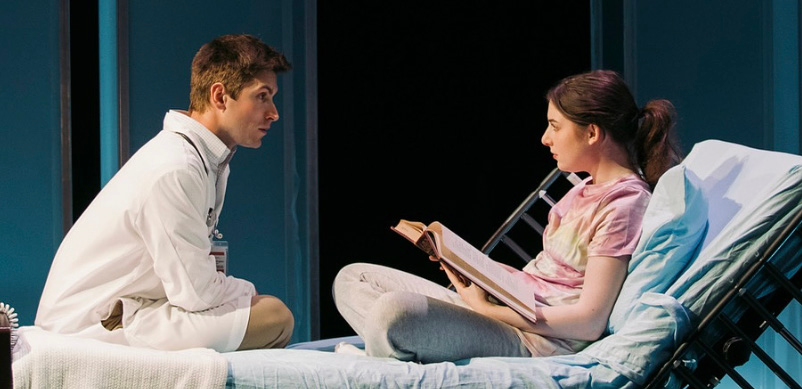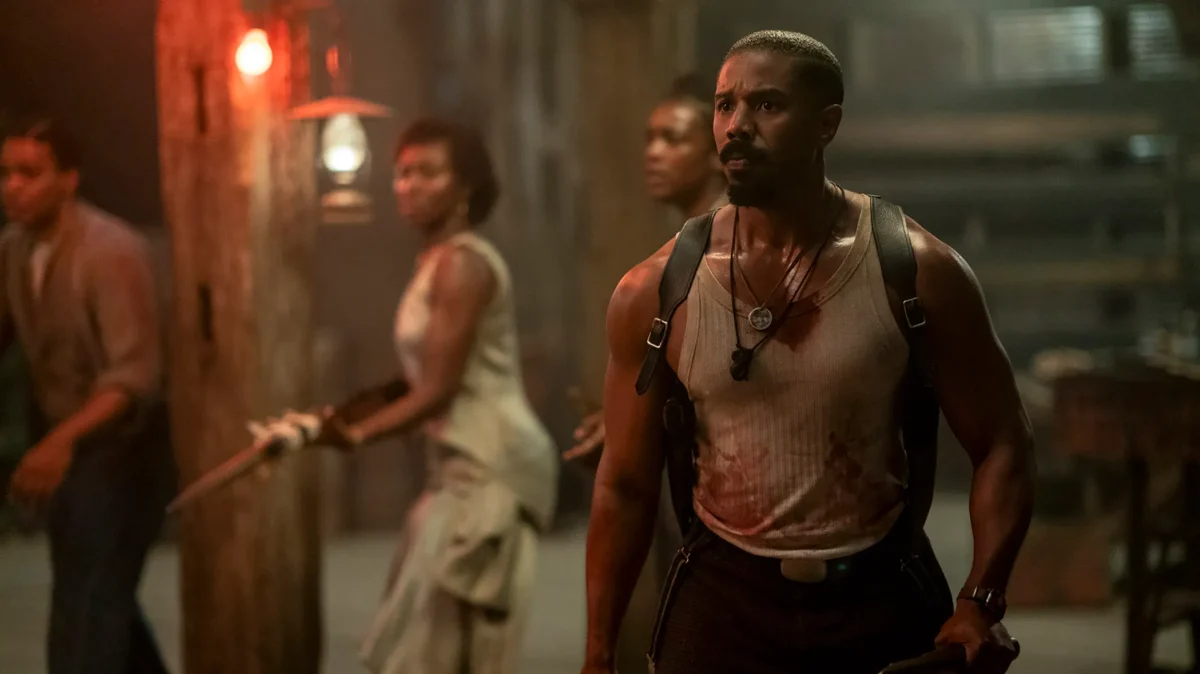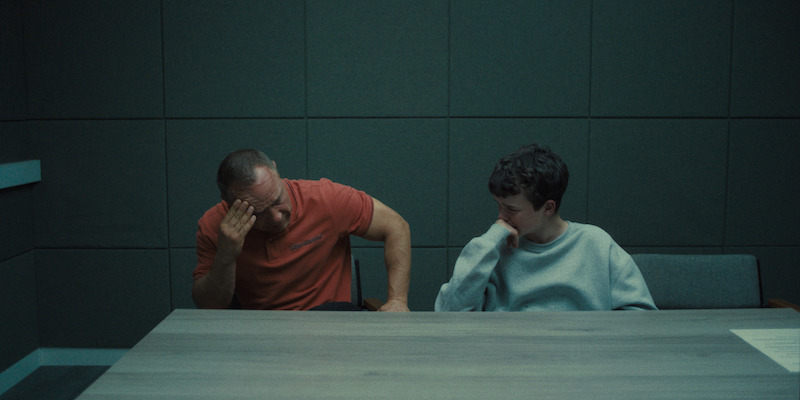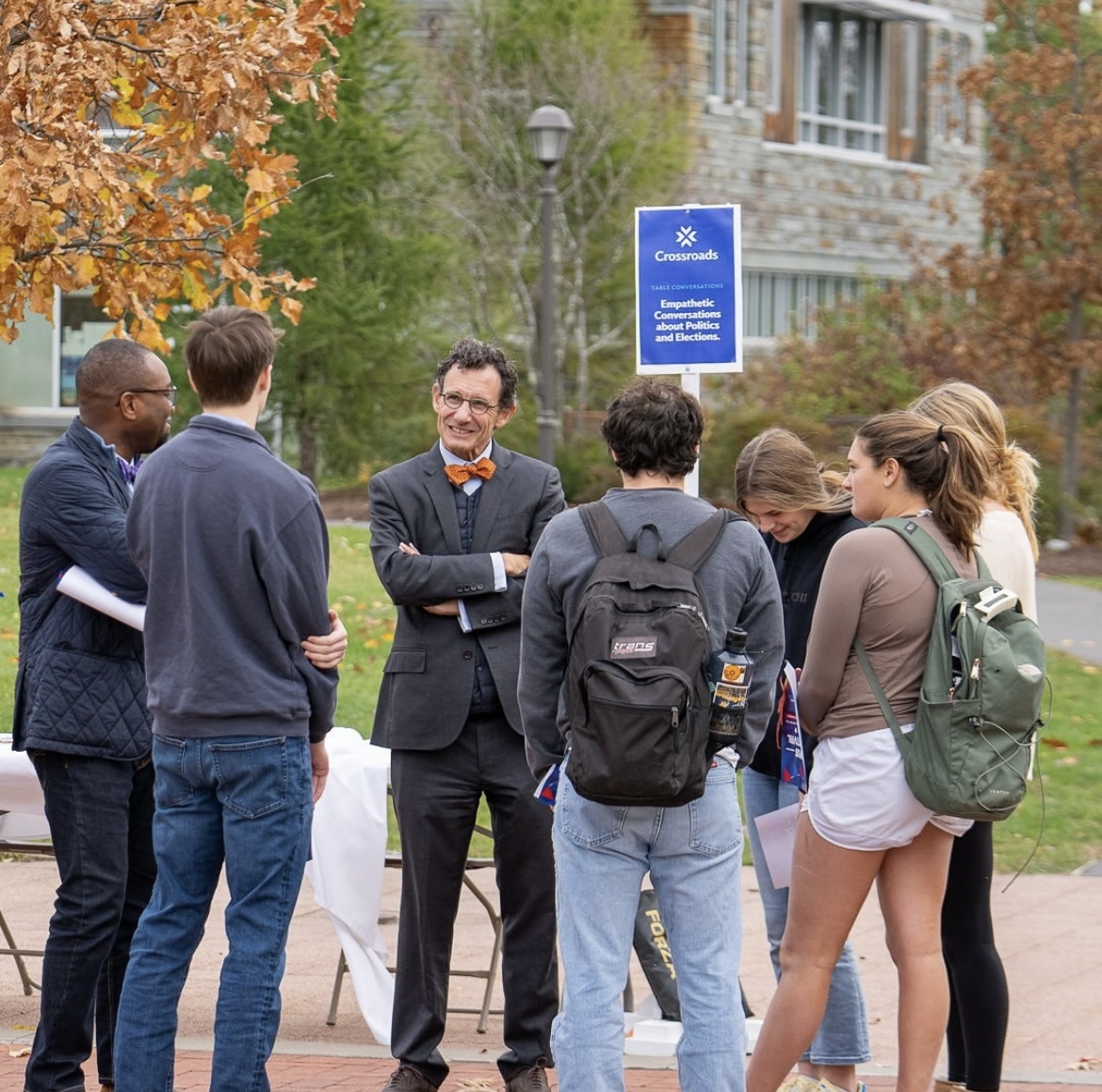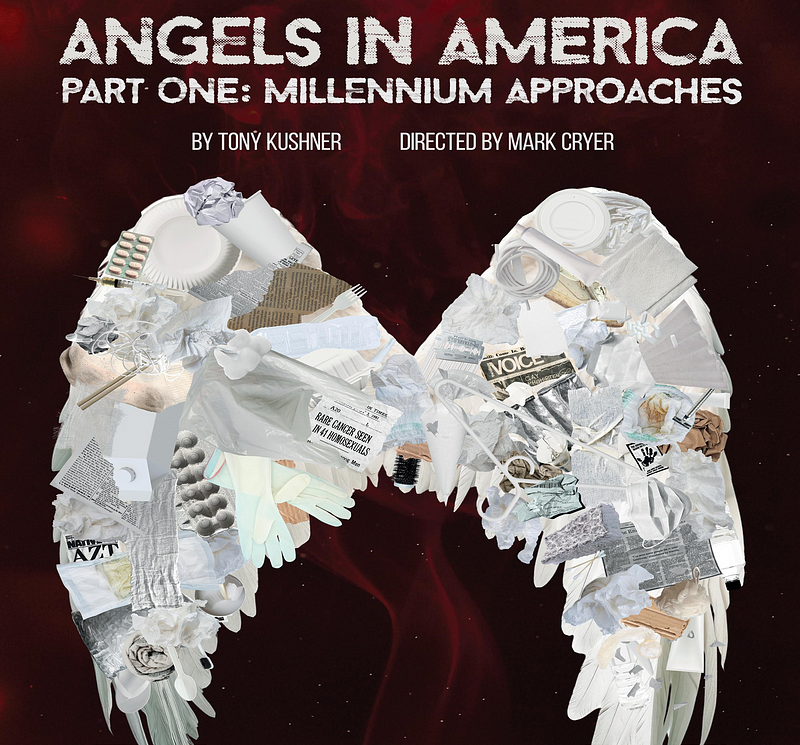
Each semester Hamilton College’s Theatre Department puts on a Mainstage Production to highlight the talents of student actors, designers and crew members. The productions are an incredible feat of dedication and commitment to the theatrical arts. This semester was no different, as Professor Mark Cryer directed a 7-show run of Tony Kushner’s Angels in America, Part One: Millennium Approaches. The student dramaturg Maggie Marks ’25, describes the play to be about “A diverse group of New Yorkers facing the deadliest year (up until that point) of the AIDS crisis.” With a premise like that, the three-hour-long production has the potential to be a dark and depressing show– but the performances, projections and incorporation of theatricalism lightened the mood and left audiences begging for more. Consider yourself lucky if you were able to snatch tickets for the sold-out run!
I attended the understudy performance on Wednesday (April 7). In this performance, Christian Hernandez ’24 played Joe Pitt, Izzy Haller ’26 played Harper Pitt, David Li ’24 played Louis Ironson, Alejandro Hernández ’26 played Prior Walter, and Aisling Mockler ’24 played the Angel. Every night Roy Cohn was played by Hamilton’s own Troy Bolton, Shai Crespin ’26. The cast’s performances were incredible and complimented one another incredibly well.
Standout moments include the argument between Joe and Harper that escalates into a slap. The blocking was well done and their performances were not only believable but kept me on the edge of my seat. The intensity and stakes were only heightened during the split scene, in which Joe/Harper and Louis/Prior are arguing. Their arguments are thematically similar, weaving together and cutting each couple off, to create a visually stunning and emotionally impactful scene. Throughout the entire play, I was impressed by Roy’s character development. From a powerful man who can get anything he wants to a sick man, dying alone and haunted by his demons. Crespin’s range as an actor shone through as he starts out suave and intimidating, but ends up on the floor crawling for help.
Without a doubt, the most impressive moment in the entire three-hour-long run was the final scene. The projection screen breaks apart and an angel pushes out. She wears massive metal, industrial-looking wings, as gold light frames her. It was jaw-dropping, stunning and beautiful. However, I did worry about Aisling as she stayed strapped up 10 feet above the stage for the entirety of the bows.
This production was brought to the next level with the work of the set, lighting, sound, costumes and projection designers. The set was a product of Broadway costume designer Tobin Ost’s expertise and executed by teams in the scenic shop (including myself), props, scenic painters and his scenic design assistants. Together they created the moving set pieces, the angel contraption and the floating walls with political prints. At times, the complex set design and big props led to slow transitions. However, that was a weakness worth the beauty of the design. The lighting was designed by Jess Buttery and executed by a student lighting team. Buttery’s work lit the angel perfectly and made the split scenes clear. The audio setup was headed by sound designer Kyle Jensen and executed by students involved in the production. Jensen was responsible for the 80s gay pop music that played throughout scenic transitions, as well as the natural sounds heard throughout the production. The costumes were designed by Rachel O’Brien ’24 as a part of her senior thesis and executed by a team of students. Her designs were showcased outside the doors of the Romano and made characters like Mr.Lies and the Angel come to life. The projections were designed by Zavier Taylor, which emphasized the theatrical elements and worked well with the set to dictate location. All of these design elements came together to create a magical production.
If you didn’t get a chance to see Angels in America, Part One: Millennium Approaches please attend some of the other productions this spring. There will be Senior Thesis Performances on April 25 and 26 at 7 p.m., a staged reading for the Playwriting Competition on Wednesday, May 1 at 4 p.m., Director’s Showcase on Thursday, May 2 at 7:30 p.m., the Collaborative Playmaking Showcase on Thursday , May 9 at 7:30 p.m., Theatre for Social Change Showcase (CW: Gun Violence) on Saturday, May 11 at 2:30 p.m., Collaborative Playmaking Showcase on Thursday, May 9 at 7:30 p.m., and a Bad Play Showcase on Monday, May 13 at 9:30 a.m.. Each of these performances will be free and open to the public in the Barrett Theatre.

